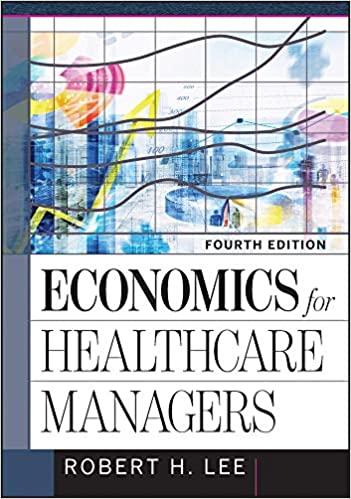A Colorado woman took her daughters to what she thought was an urgent care clinic in a
Question:
A Colorado woman took her daughters to what she thought was an urgent care clinic in a shopping mall (Olinger 2015). Both were treated for respiratory problems, and the visit went well. “I thought it was a fine experience,” she commented, “until I got the bill.” She had gotten care from a free-standing emergency department, not an urgent care clinic, and her out-of-pocket obligation for the visits was nearly $5,000. This represents an unusually high price, but care is expensive in emergency departments. Ho and colleagues (2017) found that treating respiratory infections in a hospital’s emergency department averaged $1,074, and treating respiratory infections in a free-standing emergency department averaged $1,351. In contrast, treating respiratory infections in an urgent care center averaged $165. (These are average prices paid, not charges.) Prices in emergency departments are typically more than ten times those in urgent care clinics.
These high prices explain why many healthcare reform plans seek to steer patients away from using emergency departments. For example, Oregon moved most Medicaid enrollees into coordinated care organizations, with the explicit goal of reducing emergency department use (McConnell 2016). (Because they have difficulty accessing other sources of outpatient care and because they face low out-of-pocket costs, Medicaid enrollees tend to use emergency departments at high rates.) In Oregon, use of emergency departments fell by 8 percent (McConnell 2016).
About a third of emergency department visits are not emergencies, and there is an ongoing controversy about how much such a visit costs (Galarraga and Pines 2016). Perspective differences cause part of the controversy. Insurers and patients talk about the prices that they pay, and providers talk about how much it costs to produce such visits. Yet another perspective notes that patients who use emergency departments as usual sources of care have high rates of preventable hospitalizations. Galarraga and Pines (2016) estimate that the average payment for a visit that is not an emergency is $883 but the average payment for a preventable hospitalization is $9,515.
Discussion Questions
• Why do patients who are not critically ill go to emergency departments?
• Why are prices so high in emergency departments?
• Are production costs also high in emergency departments?
• What is an example of a fixed cost in an emergency department? A variable cost?
• If an emergency department’s volumes fell, how would its costs change?
• Should insurers try to reduce emergency department use?
• How might insurers reduce emergency department use?
Step by Step Answer:






